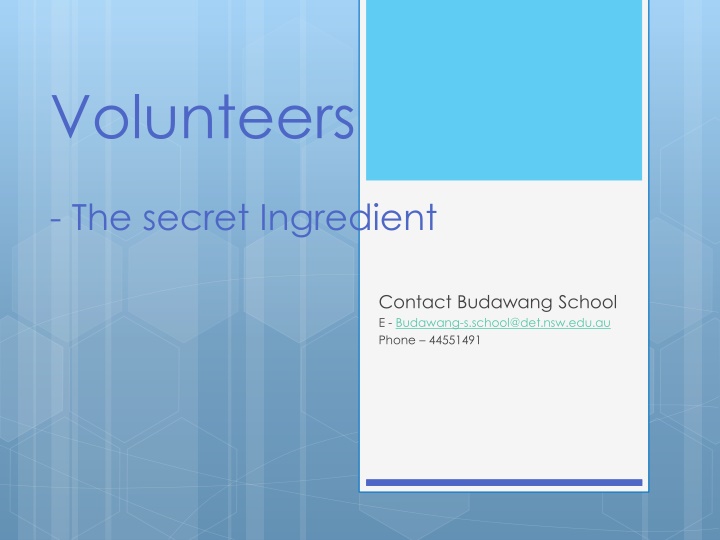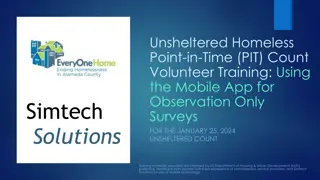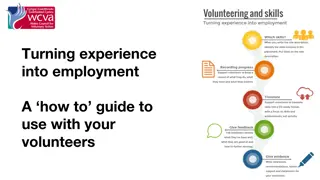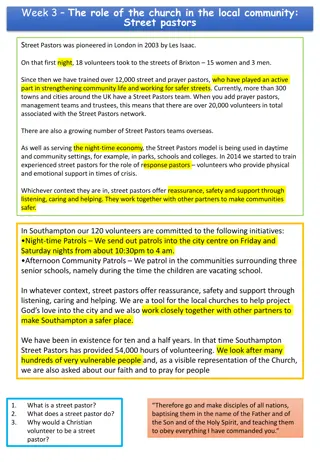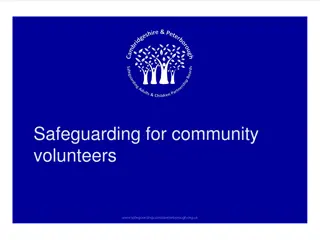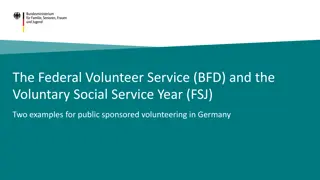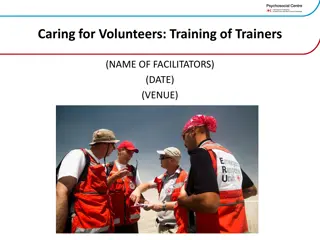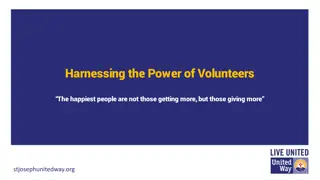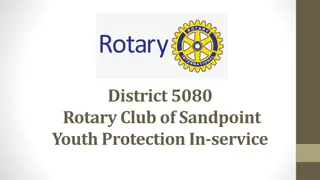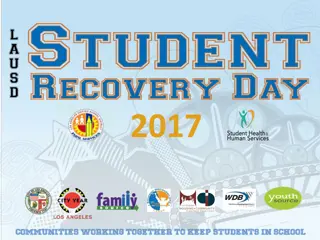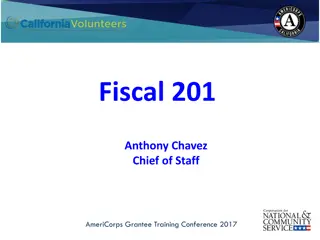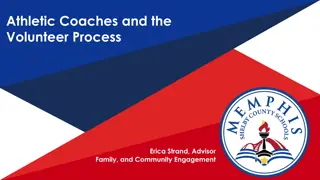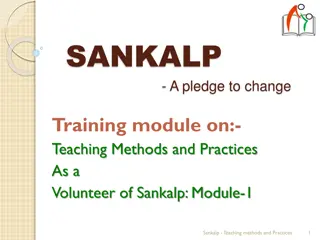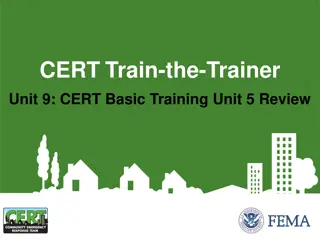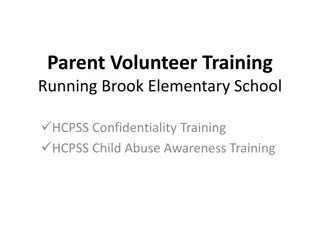The Importance of Volunteers in Budawang School
Volunteers at Budawang School bring a wealth of knowledge and experience, help access different cultures, increase socialization opportunities, and contribute to community partnerships. They assist students in various activities, come from diverse backgrounds, and work for varying durations. Volunteers benefit from the experience by seeing improvements, making a difference in students' lives, gaining new skills, and feeling a sense of purpose and belonging.
Download Presentation

Please find below an Image/Link to download the presentation.
The content on the website is provided AS IS for your information and personal use only. It may not be sold, licensed, or shared on other websites without obtaining consent from the author.If you encounter any issues during the download, it is possible that the publisher has removed the file from their server.
You are allowed to download the files provided on this website for personal or commercial use, subject to the condition that they are used lawfully. All files are the property of their respective owners.
The content on the website is provided AS IS for your information and personal use only. It may not be sold, licensed, or shared on other websites without obtaining consent from the author.
E N D
Presentation Transcript
Volunteers - The secret Ingredient Contact Budawang School E - Budawang-s.school@det.nsw.edu.au Phone 44551491
What benefits do volunteers bring to the school? They bring a wealth of knowledge and experience from past work and raising their own children They help access different cultures There is an increased opportunity for socialisation Some people have experience working with people with a disability They provide access to other community partnerships They raise the school profile in the community It provides us with a way of training future employees
What do they do? They could: Assist students with literacy, numeracy, academic and technology activities, push students on bikes, support our students in the pool, help our students to shop, cook and garden, massage students, support them in music and art classes, teach dance, visit the local library, help cover books, enable students to participate in work crews and work experience, assist with meal times, play with the students in the playground and park.
Who are they? High school students on work experience Young parents Retired people Casual or part time workers Full time workers in their lunch break Work placement students for Cert 111 and 1V from TAFE Unemployed people looking for experience in the workplace
How long do they work? Some come for 1 hour each week Some come for 2 days each week. (We don t allow volunteers to come for more than 2 days per week) Some have worked with us for 10 years, most for more than 3 years and some people only last a month or so.
Are there benefits for the volunteers? Our volunteers must enjoy the experience because they remain committed to us They tell me they: love to see improvement over time Can see the difference they make in each students life Feel that their day has an important purpose Enjoy having something different to talk about at home Know the teachers could not offer the same activities if they were not there and that the students would not be as healthy or happy Know that it is too expensive for the government to fund 1:1 staff Learn a lot and feel that they are growing as a person Enjoy the exercise Want to do something for others because they have enjoyed such privileged lives Gain new skills that might help them get a job in this field. It is like a family Enjoy the company of the staff
How do we manage the volunteers? Initial Ongoing Evaluation/feedback Special, (e.g. sickness, family trauma)
Initial We have an over riding philosophy: We believe that our community is extremely supportive of us. If someone comes to us to offer their services as a volunteer and they comply with the Working with Children Check, we almost always say yes . This means that some of our volunteers have a disability, or they may be elderly, or they may be recovering from a personal event. We will do our best to make them feel valued.
Letting people know we need volunteers We put an add in the local newspaper (Appendix 2) We mention our volunteers in our news page that goes in the news paper every 6 weeks We ask our volunteers and staff to recruit The Principal does formal presentations to local clubs and groups about our school People see our teams working in the community and ask how they can become involved.
Signing them up Once the volunteer decides that they do want to work with us it is time to exchange some details so that clear communication can be established. See (Appendix 3, 4 and 5) It is vitally important that the Principal s Checklist and Working With Children Declaration are completed.
Working with Children Checks or Prohibitive persons checks. This is given as a package when a person has approached us to volunteer, has done the walk through with the principal and has decided that they do in fact want to volunteer with us. (Appendix 3 includes working with Children Procedures for Principals, Declaration and Working with Children Principal s Checklist) Appendix 6 is the Induction Booklet
How to fit the volunteer into your weekly schedule Our volunteers are often busy people. They may be unable to fit in with our needs, for example we may need someone on a Monday but they work on a Monday. We find a place for them - we don t turn them away. Most volunteers are here to do whatever we need them to do. Some have injuries that mean that they can t do certain activities Some come with certain skills, such as massage, teaching experience or musical abilities. In addition I ask them: What days are you free to work with us? How many hours can you spare to work with us? Ok - on those days during that time, these are the activities that we can offer you or At that time I need someone to help with cooking, lunch time preparation and bike riding. How do you feel about that? If they have a certain skill that they want to use, we will work together to try to utilise this asset.
Do the teachers have a say? Having a community member in a classroom is a big ask. A teacher is on public display. Any little mistake is witnessed, every failure of the lesson preparation is evident. Some teachers just don t want to put themselves in this situation, and ultimately this has to be discussed and the teachers opinions valued, otherwise the volunteer will not feel welcome and the benefits are not realised. Plus you will have a stressed out, resentful staff member. HOWEVER If a teacher can take the risk, if they have the confidence to make mistakes in public and if they really want to implement individual learning plans the benefits are clear, not only for the students and volunteers, but for the teacher and SLSO as well.
Working with the teacher and School Learning Support Officer Discuss the various levels of responsibility that a teacher has: 1. To their class 2. To their school 3. To their community 4. To the Department of Education and Community This is important because any volunteer program has to be flexible and this requires a great degree of flexibility on the teachers part. They need to see the big picture.
The Department of Education and Community Mandates Individual Education plans for students in support classes These may be easier to implement with the help of volunteers
The community Our parents and carers expect their children to be engaged in their learning. They expect that the activities that they participate in are meaningful to them Some community members want to be involved in schools. They have skills and experience that is useful in a school setting, but they need to be free to live their lives and create a balance of their choosing
The School We have a team of volunteers who want to work with our children, but they might miss some days We often have students away, and so we need to shuffle some classes to give students the best learning opportunity. Some activities need more volunteers than others. Every day there are unforseen events that impact on classes, volunteers and activities.
The classroom The teacher or SLSO lets the principal know if they need a volunteer The Principal approaches the teacher if a volunteer is available at a specific time or if they have a specific skill they want to use. The teacher can decline the offer. If a volunteer is not needed because of absent students, they teacher may send them to another classroom or tell the principal to use them in another setting. If the class is not functioning well with this particular volunteer the teacher needs to tell the Principal. 1. 2. 3. 4.
Induction and Training Each volunteer is given an induction booklet (See Appendix 6) and the issues of confidentiality and WH&W are discussed. At that point specific training is offered to the volunteer at a time that suits. (See appendix 7). Most prefer to learn their skills in the classroom. Discuss with them what to do if they can not attend on the day Discuss with them the issues that may arise if they bring unexpected visitors to the school.
On going Management If the class is not functioning better with a particular volunteer the Principal needs to be told If there is a personal conflict with the volunteer and a staff member or student the principal needs to be told The volunteer must be encouraged to let the principal know if the situation is not working well for them. They can do this by: 1. Talking to someone on staff including the principal 2. Putting a note in the feedback box 3. Completing the on line feedback form on the school webpage. (see Appendix 8)
What to do if someone is just not suited to the task. Our teachers priority is the students. They can not be distracted by volunteers who, despite some weeks of training are not able to work productively in a given setting or who fail to attend and give no notice. The teachers pass this information on to the principal and they negotiate a position that will suit both.
What if the volunteer is on extended holiday or sick? We work around this. Staff are informed on the notice board and volunteers are assured that they are not letting us down. Students write cards, visit the person if they are on a community outing and the principal makes contact. Post cards are exchanged and the person is treated like the valued member of our school community that they are.
Ensuring the volunteers feel valued We provide badges with the volunteers names We offer a cheery hello when they arrive We give them small gifts and certificates of appreciation They share our staff room and common room where we provide free tea and coffee and chat with them to get to know them better We invite them to special events, like open days, presentation nights and formals We ask their opinion and give them time to learn. We thank them for their help both privately and publicly.
How do we know if our volunteers do feel valued? The principal speaks to them regularly and asks do you know how important you are to us? If a staff member is concerned about this they will ask the principal to find out if the volunteer is happy with what they are doing If someone stops coming, the principal or other staff member should contact them. Volunteers are asked to complete a feed back sheet every term. (see Appendix 8) They are issued with name tags (Appendix 9)
Generating feedback A general and informal atmosphere of informal discussion is encouraged. It s best to seek the feedback I hope I didn t offend you then, but the student seemed in distress rather than ignore a possible slight. Staff, parent/carer, student and volunteer feedback sheets are always available to be completed when ever the need arises. (See Appendix 10,11 and 12) On line feedback is available through the schools web page.
Timetabling Staff need to know who to expect in their classrooms and activities. This is done in 3 ways: A volunteer list. This changes all the time, but when needed it is up-dated (See Appendix 13) The daily timetable This tells staff who is doing what, with whom. It includes the volunteers names. If a volunteer is away, their name goes up on the daily notices board.
Evaluation Each staff member, volunteer , parent and student needs to know that the program is in a constant state of improvement. They need to know that they can safely provide feedback via: Face to face discussion Pen and paper evaluation (Appendix 37) On line evaluation via the schools web page 1. 2. 3.
How does the Volunteer know what to do? This depends on the activity they are working on. The next slides provide details for each of the Key learning areas K- 12 The volunteer generally works with the same student unless they are away
English/literacy Consider using a literacy bag that is packed by the classroom teacher at the beginning of each week All the resources needed are in the bag Appendix 12 provides a program of planned literacy activities for students from K-12 with a moderate or severe intellectual disability. These are aligned with the Literacy continuum
Maths/numeracy Consider using a numeracy bag that is packed by the classroom teacher at the beginning of each week All the resources needed are in the bag Appendix 13 provides a program of planned numeracy activities for students from K-12 with a moderate or severe intellectual disability. These are aligned with the numeracy continuum.
PDHPE Swimming See Appendix 16 Bike riding see Appendix 17 Community sport See Appendix 18 Sensory (Appendix 19) Community Events (Appendix 20) Playground Support (Appendix 21)
Human Society and Its Environment Shopping (Appendix 22) Town Library visits (Appendix 23) Work Crews (Appendix 24) Student Volunteers(Appendix 25) Visiting the park (Appendix 26)
Science Gardening (Appendix 27) Cooking (Appendix 28) Cleaning the fish tank 29) Meal times (Appendix 30)
Creative and Performing Arts Art (Appendix 31) Music (Appendix 32) Assembly (Appendix 33) Technology (Appendix 34) Woodwork (Appendix 35) Volunteers Toolkit (Appendix 36) Evaluation (Appendix 37)
Technology Computer (Appendix 32) Wood work (Appendix 33) Cooking (Appendix 26)
How do volunteers know what NOT to do? These instructions are clearly noted in the induction booklet and again in the Volunteers Toolkit ( Appendix 34) They must not change students nappies, they must not shower, bathe or remove students underwear, They must not lift students or use electric wheelchairs They must not take the students out of the school grounds without a staff member. They must not work alone with students.
Contact us if you would like more information. Contact our Principal Sheryl Bruffey Phone: 44551491 Email: budawangs.school@det.nsw.edu.au
